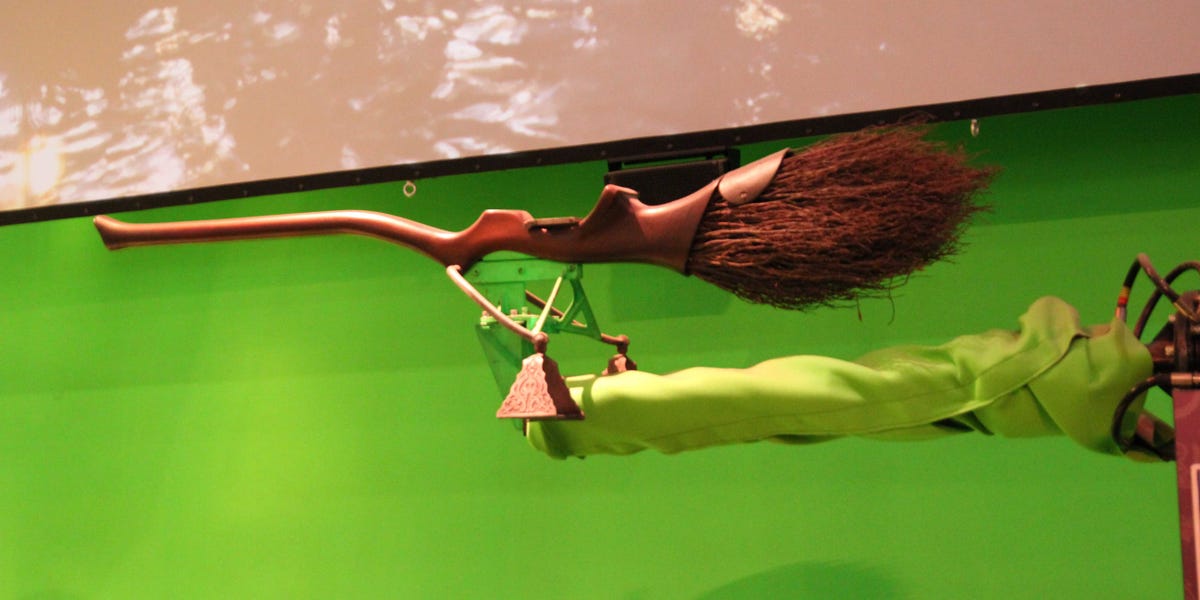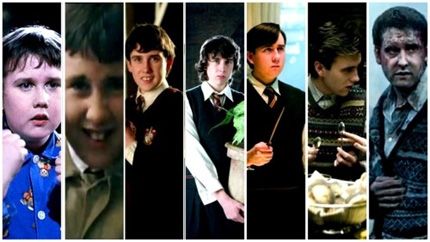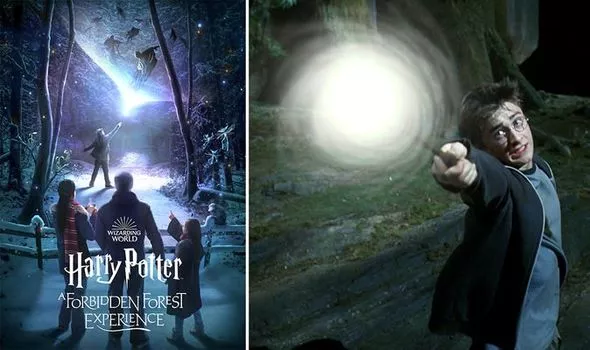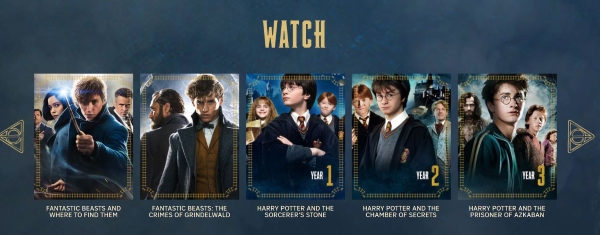The Art Of Visual Effects In The Harry Potter Movies
When it comes to the magical world of Harry Potter, there’s no denying that the visual effects play a vital role in bringing the fantastical elements to life. From flying broomsticks to talking portraits, the art of visual effects in the Harry Potter movies is truly spellbinding. In this article, we’ll explore the enchanting world of visual effects and how they were seamlessly integrated into the wizarding world.
Imagine soaring through the air on a Nimbus 2000, dodging bludgers and chasing the golden snitch. The visual effects in the Harry Potter movies make this fantastical experience a reality. With the help of cutting-edge technology and skilled artists, the filmmakers were able to create breathtaking scenes that transport viewers into the wizarding world. From the whimsical creatures like house-elves and hippogriffs to the awe-inspiring spellcasting and wand battles, the visual effects team worked their magic to make every scene come alive. So, grab your wand and get ready to delve into the mesmerizing art of visual effects in the Harry Potter movies.

The Art of Visual Effects in the Harry Potter Movies
The Harry Potter movies are known for their stunning visual effects, which bring the magical world to life on the big screen. From the majestic Hogwarts Castle to the thrilling Quidditch matches, these films have captivated audiences with their imaginative and realistic special effects. In this article, we will explore the art of visual effects in the Harry Potter movies and delve into the techniques and creativity behind their creation.
The Magic of Digital Effects
The Harry Potter movies are a perfect example of how digital effects can enhance the storytelling and create a truly immersive experience for the viewers. These films transport us to a world where magic is real, and the visual effects play a crucial role in making that world come alive. From creating magical creatures like dragons and hippogriffs to animating objects with a mind of their own, the digital effects artists behind the scenes work their magic to make the impossible possible.
One of the most iconic visual effects in the Harry Potter movies is the portrayal of the moving staircases in Hogwarts Castle. These staircases are not just ordinary staircases; they shift and change direction, adding an element of mystery and wonder to the magical school. The visual effects team used a combination of computer-generated imagery (CGI) and practical effects to bring these staircases to life. By carefully blending the real and the digital, they were able to create a seamless and believable effect that enhances the magical atmosphere of the movies.
The Evolution of Visual Effects in the Harry Potter Series
Over the course of eight movies, the visual effects in the Harry Potter series evolved and improved, pushing the boundaries of what was possible on screen. In the early movies, the focus was on creating practical effects using animatronics and prosthetics to bring the magical creatures to life. However, as technology advanced, the filmmakers turned to digital effects to achieve even more breathtaking visuals.
One notable example of this evolution is the portrayal of the character Dobby, a house-elf who plays a significant role in the later movies. In the earlier films, Dobby was created using a combination of animatronics and CGI. However, as the technology improved, the visual effects team was able to create a fully digital version of Dobby, giving the character more freedom of movement and allowing for more expressive performances. This transition from practical effects to digital effects showcases the constant innovation and dedication to pushing the boundaries of visual effects in the Harry Potter movies.
The Importance of Practical Effects
While digital effects played a significant role in bringing the magical world of Harry Potter to life, practical effects also had their place in creating a sense of realism and authenticity. The filmmakers understood the importance of tactile and physical elements in grounding the fantastical elements of the story. From the intricate set designs to the practical effects used in the magical duels, these practical elements added depth and texture to the visual effects.
One example of the importance of practical effects is the portrayal of Quidditch, the high-flying sport played by the students of Hogwarts. Instead of relying solely on CGI, the filmmakers used a combination of practical effects and digital enhancements to create the thrilling Quidditch matches. The actors were suspended on rigs and flew through the air, while the digital effects team added the elements like the Quidditch balls and the stadium crowd. This combination of practical and digital effects created a sense of realism and excitement that would not have been possible with CGI alone.
The Collaboration Between Filmmakers and Visual Effects Artists
The success of the visual effects in the Harry Potter movies is a testament to the collaboration between the filmmakers and the visual effects artists. It is a delicate balance of creativity, technical expertise, and storytelling. The filmmakers provide the vision and the direction, while the visual effects artists bring that vision to life using their technical skills and artistic sensibilities.
Throughout the production of the Harry Potter movies, the filmmakers and the visual effects team worked closely together to ensure that the visual effects seamlessly integrated into the story. This collaboration involved extensive pre-production planning, on-set supervision, and post-production fine-tuning. The result is a series of movies that transport viewers into a world of magic and wonder, thanks to the seamless integration of practical and digital effects.
In summary, the art of visual effects in the Harry Potter movies is a testament to the creativity and technical prowess of the filmmakers and visual effects artists involved. The combination of digital effects and practical elements creates a truly immersive experience for viewers, bringing the magical world to life on the big screen. From the evolution of visual effects throughout the series to the collaboration between filmmakers and visual effects artists, every aspect of the visual effects in the Harry Potter movies contributes to their success and enduring popularity. Whether it’s the moving staircases of Hogwarts or the thrilling Quidditch matches, these visual effects have become an integral part of the Harry Potter legacy.
The Art of Visual Effects in the Harry Potter Movies – Key Takeaways
- The Harry Potter movies used visual effects to bring the magical world to life.
- Visual effects were used to create magical creatures like dragons, giants, and centaurs.
- Special effects were used to make objects float, disappear, and transform.
- The visual effects team used a combination of practical effects and computer-generated imagery (CGI) to achieve the desired magical effects.
- The attention to detail in the visual effects helped to immerse the audience in the magical world of Harry Potter.
Frequently Asked Questions
1. How were the visual effects created in the Harry Potter movies?
The visual effects in the Harry Potter movies were created through a combination of practical effects and computer-generated imagery (CGI). The filmmakers used a variety of techniques to bring the magical world of Harry Potter to life on the big screen.
For example, the flying broomsticks were achieved using a combination of wire work and CGI. The actors would be attached to wires and filmed against a green screen, and then the broomsticks would be added in post-production using CGI. This allowed the actors to have the freedom to move and perform while still creating the illusion of flying.
2. What role did visual effects play in creating the magical creatures in the Harry Potter movies?
Visual effects played a crucial role in bringing the magical creatures of the Harry Potter movies to life. Many of the creatures, such as Dobby the house-elf and Buckbeak the hippogriff, were entirely computer-generated.
The visual effects artists worked closely with the filmmakers to design and animate these creatures, ensuring that they looked realistic and believable. Through the use of advanced CGI techniques, they were able to create creatures that interacted seamlessly with the human actors and the physical environments.
3. How were the spells and wand movements visualized in the Harry Potter movies?
In the Harry Potter movies, the spells and wand movements were visualized through a combination of practical effects and CGI. The actors would perform the wand movements on set, often with the help of props or markers to indicate where the visual effects would be added later.
In post-production, the visual effects artists would add the magical elements, such as glowing lights or sparks, to enhance the spells and wand movements. This combination of practical effects and CGI helped to create the illusion of magic in the movies.
4. Can you give an example of a challenging visual effects shot in the Harry Potter movies?
One example of a challenging visual effects shot in the Harry Potter movies is the scene in “Harry Potter and the Goblet of Fire” where Harry battles a dragon during the Triwizard Tournament. This scene required a combination of practical effects and CGI to create the realistic and dangerous-looking dragon.
The filmmakers used a combination of animatronics and CGI to bring the dragon to life. They built a physical model of the dragon for the actors to interact with on set, and then the visual effects artists added the realistic movements and details in post-production. This shot required a lot of coordination between the practical effects team and the visual effects team to create a seamless and thrilling sequence.
5. How did visual effects contribute to the overall cinematic experience of the Harry Potter movies?
The visual effects in the Harry Potter movies played a crucial role in creating the magical world and bringing the story to life. They allowed the filmmakers to depict fantastical creatures, epic battle scenes, and awe-inspiring magical spells that would not have been possible without the use of visual effects.
By seamlessly blending practical effects with CGI, the visual effects artists were able to create a sense of wonder and immersion for the audience. The visual effects enhanced the storytelling and helped to transport viewers into the enchanting world of Harry Potter.

What the Harry Potter Movies Would Look Like Without Visual Effects: CGI AND VFX |🍿OSSA Movies
Final Summary: The Magic of Visual Effects in the Harry Potter Movies
Lights, camera, magic! The Harry Potter movies have captured the hearts of millions around the world with their enchanting stories and captivating visuals. From flying broomsticks to talking portraits, the art of visual effects in these films has truly brought the wizarding world to life. In this final summary, let’s take a moment to appreciate the incredible work that goes into creating these awe-inspiring effects.
The visual effects team behind the Harry Potter movies deserves a standing ovation. With their meticulous attention to detail and innovative techniques, they have seamlessly blended reality with fantasy. From the breathtaking Quidditch matches to the awe-inspiring creatures like Dobby and Buckbeak, every scene is a testament to their skill and creativity. The use of CGI (Computer Generated Imagery) has allowed the filmmakers to bring to life the magical elements of J.K. Rowling’s books in a way that was once unimaginable.
But it’s not just the CGI that makes the visual effects in these movies so extraordinary. The practical effects, such as the animatronics and prosthetics, add an extra layer of realism and depth to the magical world. The combination of practical and digital effects creates a seamless and believable experience for the audience, transporting us into the spellbinding realm of Hogwarts.
In conclusion, the art of visual effects in the Harry Potter movies is nothing short of magical. The dedication and creativity of the visual effects team have brought to life a world that has captured the imaginations of millions. From the smallest enchantments to the grandest battles, every visual effect in these films adds to the wonder and awe of the wizarding world. So let us raise our wands and applaud the incredible artistry that has made the Harry Potter movies an unforgettable cinematic experience. Accio visual effects!






